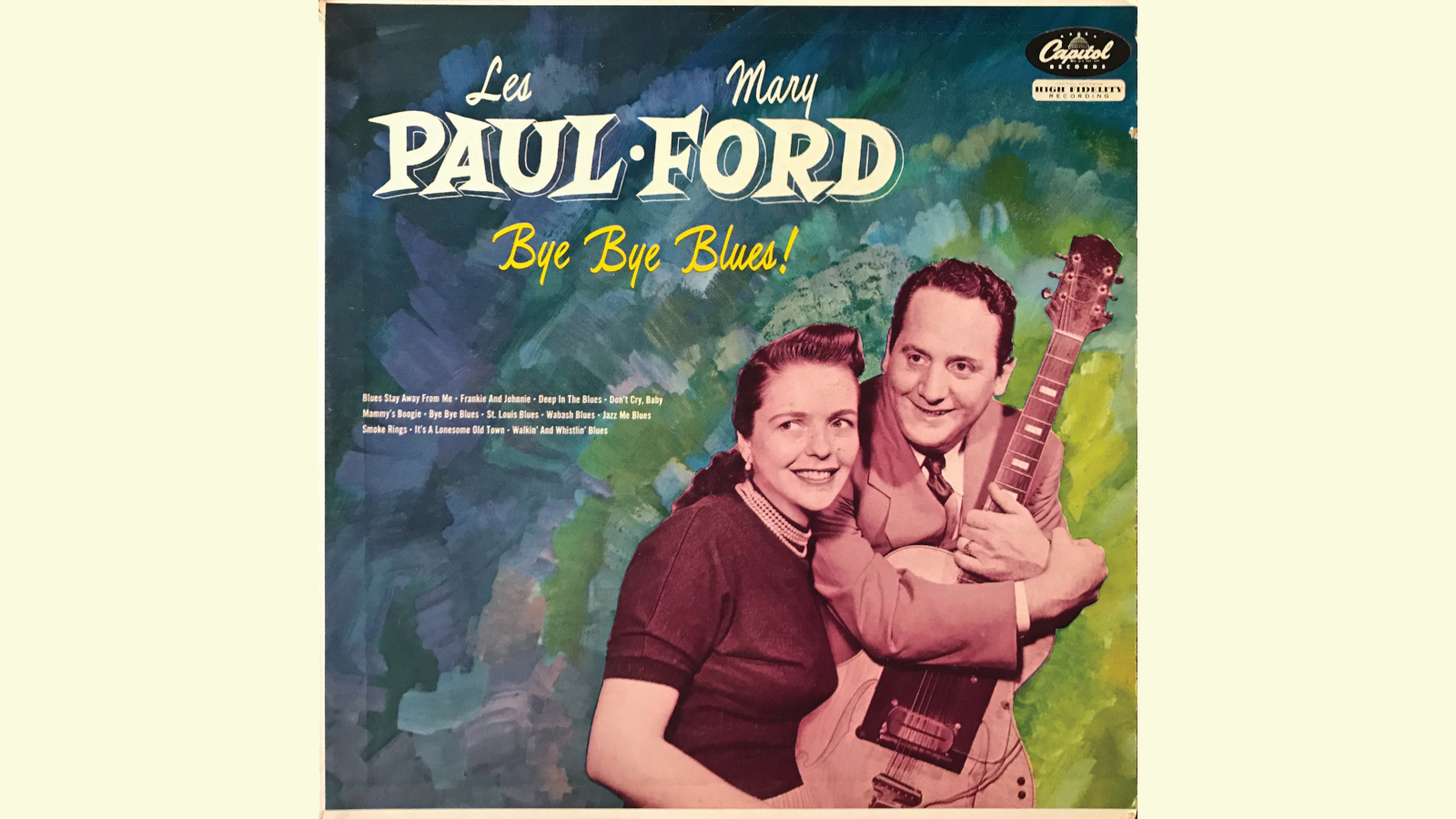Every Guitar Player Can Learn Something From Listening to Les Paul and Mary Ford’s ‘Bye Bye Blues!’
Featuring great melodies, bends, trills, slides and raking, the electric guitar innovator always puts the listener first on this ‘50s gem

I saw Les Paul in New York City at the Iridium, near Times Square, on September 10, 2001, where I sat a few feet in front of him.
Mr. Paul, who was 85 years old at the time, had lost the athleticism of his left hand, but it made no difference to his artistry and personality, which shot out like a lightning bolt.
He was witty, sassy, intense and totally entertaining, holding court with the crowd and teasing the intimidated guests who were brave enough to sit in with him.
Les Paul was witty, sassy, intense and totally entertaining
Jim Campilongo
Afterward, I chose to forgo a cab and walk from Times Square to the Lower East Side, where I was staying with guitarist/pal Adam Levy.
That night, I decided New York City was where I wanted to live. Aside from its enormity and possibilities, I thought that if I could sit a couple of feet from a legend like Les Paul once a week, this was where I belonged.
Unfortunately, a few short hours later, the city was attacked and all hell broke loose. But the humanity of Les Paul still remains close to my heart, and I have continued to live in New York City.
Capitol Records released Les Paul and Mary Ford’s Bye Bye Blues! as a 10-inch, 33-rpm disc in 1952. It included the title track and seven other recordings. Four more tracks were added to the 1955 long-player version.
All the latest guitar news, interviews, lessons, reviews, deals and more, direct to your inbox!
Discovering that Les Paul wasn’t just an electric guitar model but also a living person left me open-mouthed
Jim Campilongo
Owing to Les’s multitracking innovations, he and Mary are the only musicians on this little gem of a record.
I was lucky enough to be introduced to Les’s music in the ’70s by a co-worker who I jammed with during our lunch hour.
Discovering that Les Paul wasn’t just an electric guitar model but also a living person left me open-mouthed. I instantly became a fan.
Suddenly, Jeff Beck’s “Jeff’s Boogie” seemed more like an homage to Les than a piece unique to itself.
I began to dig.
Luckily, the first record I purchased was the LP version of Bye Bye Blues! It’s a great album, featuring the endearing and laid-back vocals of Mary Ford. She was the perfect balance to Les’s flash.
“Smoke Rings” demonstrates their incredible chemistry. While Mary Ford’s phrasing is easy and generous, Les plays animated, angular fills that have an almost Hanna-Barbera-like quality to them.
I love 'Bye Bye Blues!' because Les plays it fairly straight throughout
Jim Campilongo
As for the title track, it’s simply amazing, possessing the intangible recipe for a hit. It has an otherworldly quality that calls our name and insists we live within the moment of the song.
I love Bye Bye Blues! because Les plays it fairly straight throughout, keeping his crazy pitch altering to a minimum.
His solos employ great melodies, bends, trills, slides and raking that require artistry and oomph.
“Blues Stay Away From Me,” “Frankie and Johnny” and “Jazz Me Blues” feature an iconic knowledge of blues phrases that the listener can hang their hat on, and Les keeps it entertaining.
He’s always vaudevillian, putting the listener first. And to my ears, ironically, he sounds like a Telecaster guy.
Through Les and, indirectly, Jeff Beck and Danny Gatton, Les’s phrases became a big part of my guitar vocabulary.
It was through his guitar that he conveyed his uniqueness as a witty, sassy, intense and totally entertaining person
Jim Campilongo
There’s some of “Mr. Sandman” in “Loose,” “The Prettiest Girl in New York” and “Heaven Is Creepy,” revealing a huge debt owed to Les Paul.
Every guitar player can learn something from Les. While he was an innovator and a great guitarist, it was through his guitar that he conveyed his uniqueness as a witty, sassy, intense and totally entertaining person.
Which is why when I saw him in 2001, I felt I already knew him.
Order Les Paul and Mary Ford's Bye Bye Blues! here.
Jim Campilongo has 14 critically acclaimed instrumental records available on vinyl, CD and digital download here.





